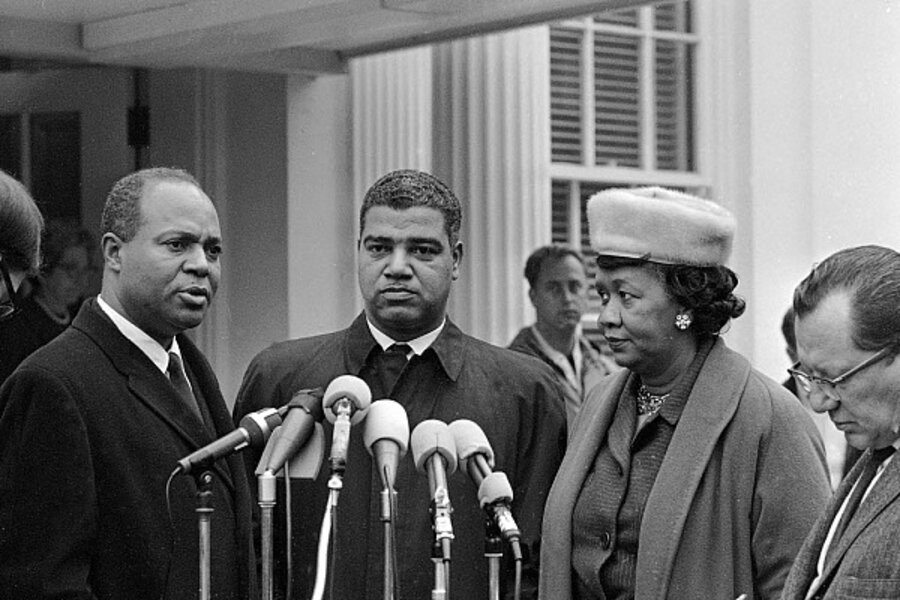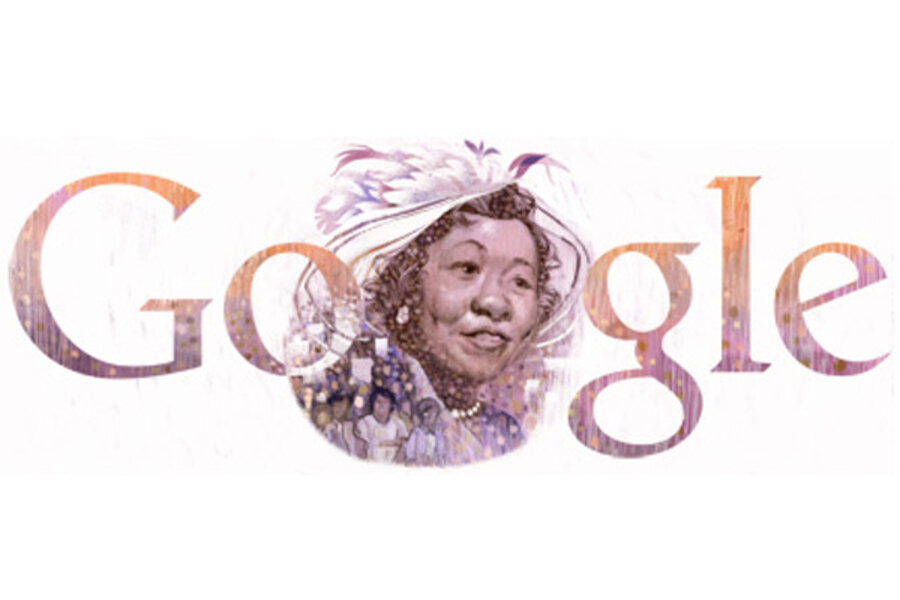Dorothy Irene Height and the civil rights movement's other unsung heroes
Loading...
Ask most elementary school students today, and they could tell you a few leaders of the civil rights movement: Martin Luther King Jr., Rosa Parks, Malcolm X. But the movement was hardly championed by these three figures alone. Many change-makers, however, have gotten lost in the pages of history.
Google paid homage to one of these unsung heroes Monday with a Google Doodle honoring Dorothy Irene Height on what would have been her 102nd birthday. Here’s a look at what Ms. Height contributed to the civil rights movement, as well as a look at a few other lesser known, but vitally important, civil rights advocates.
Dorothy Height
From organizing anti-lynching protests as a high school student in 1930s Pennsylvania to working as a caseworker for the YWCA to helping organize the iconic March on Washington, Dorothy Height was a quiet but immensely powerful advocate for social justice issues over a nearly 80-year career. She started as a social worker in New York, after completing her bachelor and masters degrees at New York University. (She was first admitted to Barnard College, but was turned away because they had already met their black student quota for the year, though the school awarded her with an honorary degree in 2004.) She subsequently started the YWCA’s Center for Racial Justice, served as president of the National Council of Negro Women, and implemented programs like the “pig bank,” which gave poor families pigs (a valuable gift). In addition, she kick-started interracial dialogue and celebrations of African-American culture throughout the country. Height also made waves in the women’s rights movement. Along with feminist pioneers Gloria Steinem and Betty Friedan, she helped found the National Women’s Political Caucus in the 1970s.
Though her work was instrumental in the effectiveness of these movements, she was largely cut out of the spotlight due to her race (in the women’s movement) and gender (in the civil rights movement). She passed away in 2010, but not before gaining recognition for her years of quiet, hard work: she was an honored guest at President Obama’s inauguration in 2009.
Claudette Colvin
Many know the case of Rosa Parks, but another young woman stood her ground (or held her seat, rather) in protest of Alabama’s segregated bus laws about nine months earlier. In March 1955, 15-year-old Claudette Colvin and three friends were told to change seats so one white woman could sit down. While Ms. Colvin’s three friends got up and moved, she remained seated, letting the bus driver know it was her “constitutional right” to keep her seat. Later, two police officers came on board and arrested her. She was subsequently charged with violating segregation law, disorderly conduct, and assault and battery on a policeman. She maintained there was no assault and that the police officers harassed her. The Montgomery bus protests began in December 1955, when Rosa Parks made her stand, and in 1956, Colvin was asked by the NAACP to be a part of a lawsuit with three other women against Alabama's bus segregation law. This became known as Browder vs. Gayle. The Supreme Court ruled in favor of those women, and the law was struck down.
Some were wary about including Colvin in the lawsuit because she became pregnant soon after the arrest, yet never married. She claims her role in the bus boycotts also labeled her as a “troublemaker” and caused her employment problems. However, she eventually got a job in New York, and today says her family is where it is because of those early days of protest. “None of [my children or grandchildren] are in the criminal justice system, and that’s a blessing,” she told Essence Magazine in August. “Although there is still a lot of work to be done, you could say my family did reap the benefits of Dr. King’s dream.”
Ella Baker
The NAACP, Young Negroes Cooperative League, the Southern Christian Leadership Conference (SCLC), and the Student Nonviolent Coordinating Committee (SNCC) can all thank one largely unsung hero of the civil rights movement: Ella Baker. Ms. Baker was influenced by stories of her grandmother’s harrowing experience as a slave and brought that motivation to start some of the strongest groups fighting for civil rights in the mid-twentieth century. After graduating from Shaw College in North Carolina, she worked in the field to make change with organizations such as the NAACP and the SCLC. Though these are feats within themselves, her largest contribution came when she started SNCC, which brought about a wave of Gandhi-inspired nonviolent protests, organized Freedom Rides, and focused national attention on prejudice against black voters in Mississippi.
Part of the reason Baker isn’t known as well as other leaders in the civil rights movement was her own philosophy. She strongly believed in grassroots advocacy and egalitarianism, and spoke out against what she saw as a gendered hierarchy in the Black church (which largely influenced the civil rights movement). She believed that people should be empowered to make their own change, rather than following the commands of a central leader. Her influence won her the nickname Fundi, which is a Swahili word for meaning “a person who teaches a craft to the next generation.”
Fannie Lou Hamer
Though the March on Washington may be one of the most iconic moments of the civil rights movement, the fight in one state, Mississippi, was what convinced many people to stand up against injustice. Fannie Lou Hamer was at the forefront of that battle. Ms. Hamer was born into a sharecropping family in Mississippi and continued to work on plantations until she attended a protest meeting in 1962. That meeting persuaded her to join a group of 17 other African Americans to travel to a nearby city to register to vote. They were met with violent resistance, and the move got Hamer fired from her job on the plantation where she worked for nearly two decades. It also launched her into a career of championing civil rights in the Deep South.
Hamer subsequently worked for SNCC and founded the Mississippi Freedom Democratic Party, which was the African-American group that challenged the all-white Mississippi delegation to the 1964 Democratic National Convention. She gave an impassioned speech to the credentials committee about her attempts to register to vote that made national broadcasts, and shed light on the violent racism blacks faced in the Mississippi Delta. Her activism resulted in threats, attacks, and beating. She ran, unsuccessfully, for Congress in 1964, but one of her signature lines reflected the experience of her community, and rallied support that far outlasted her candidacy: “I’m sick and tired of being sick and tired,” she would often say.









